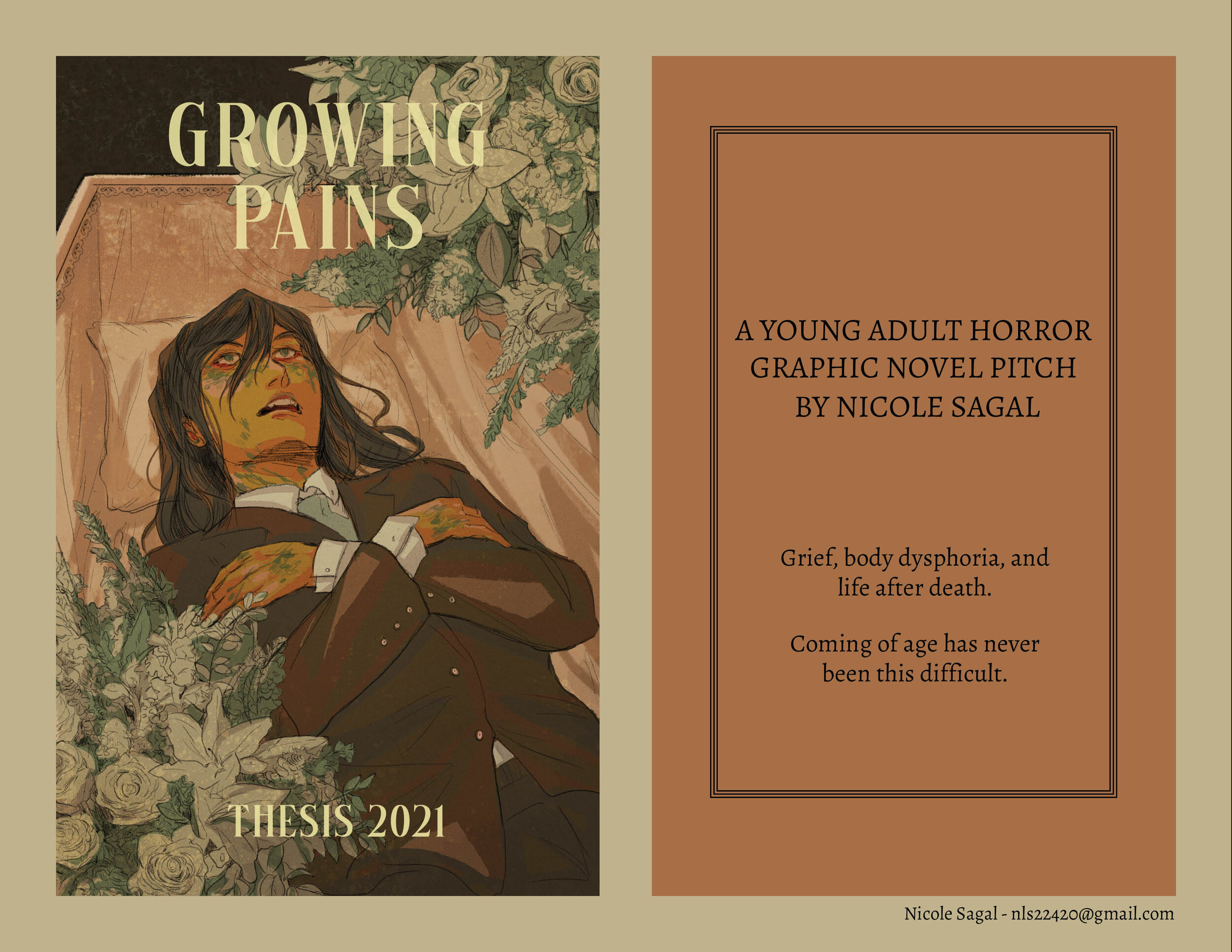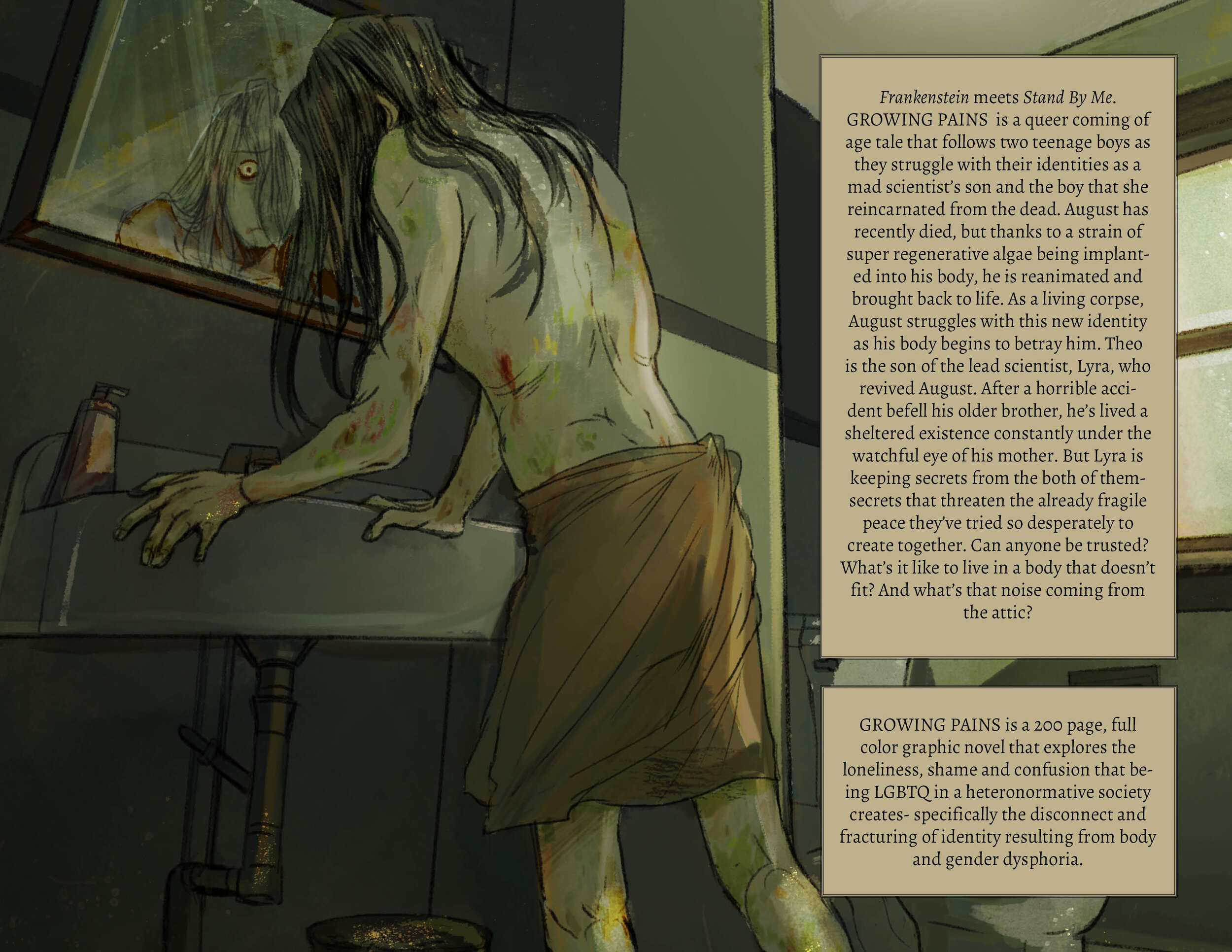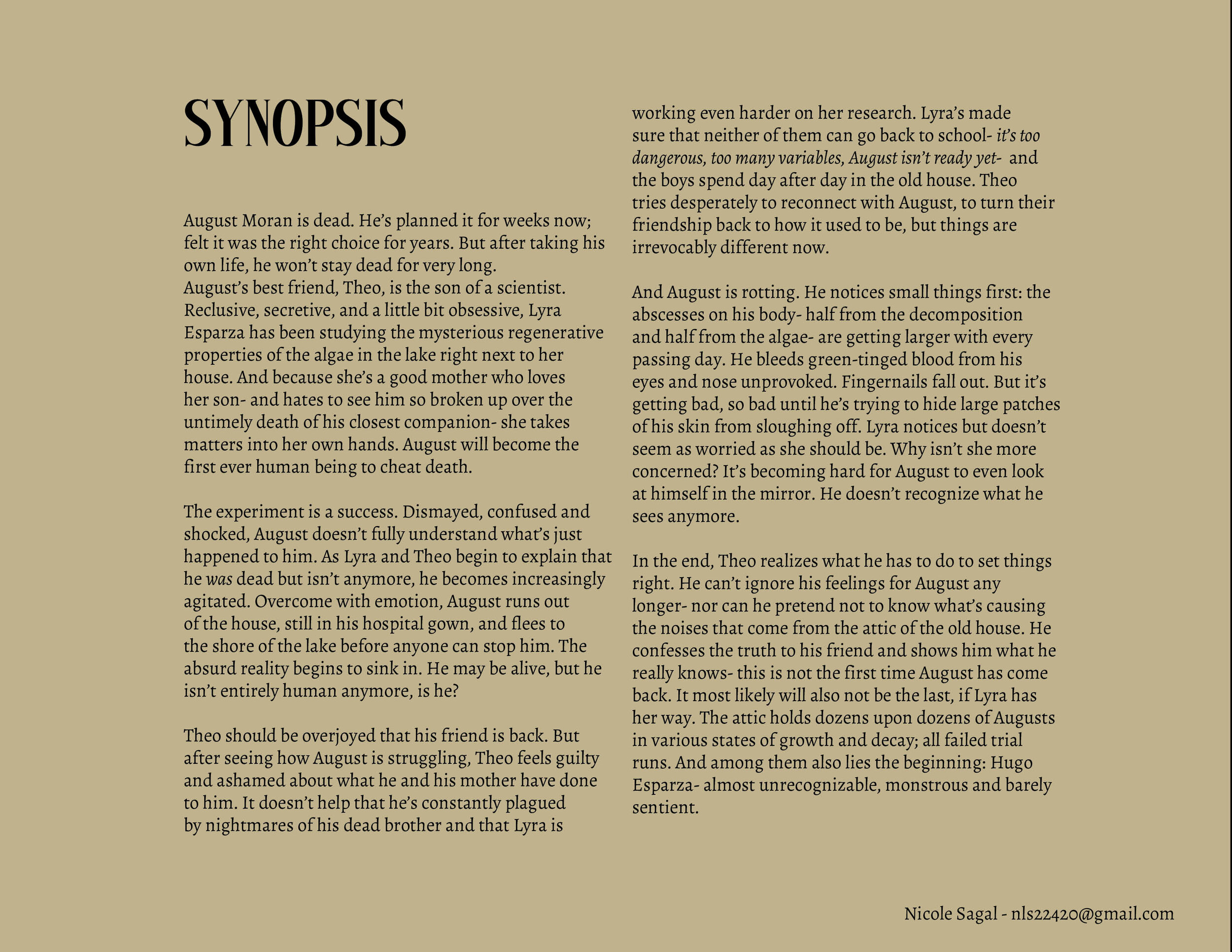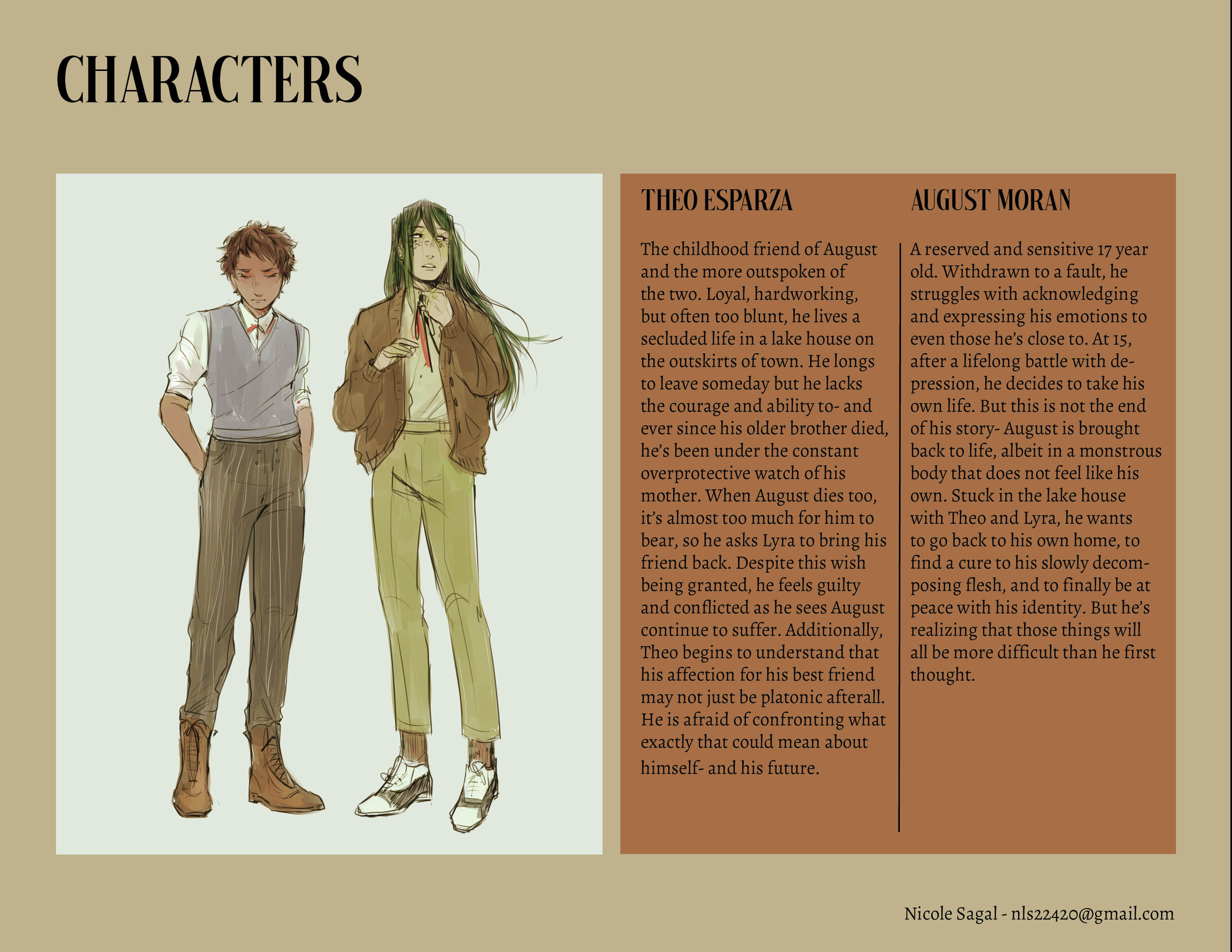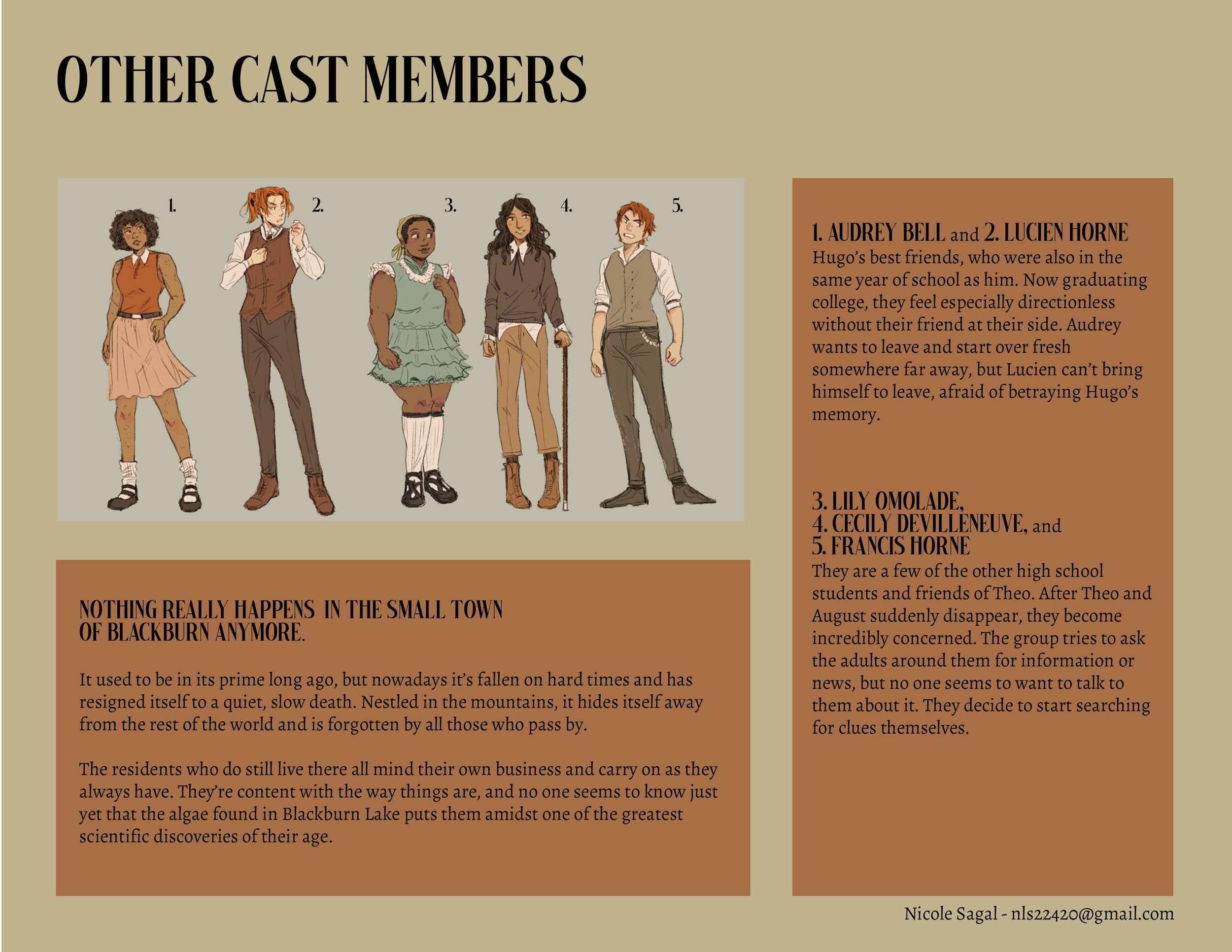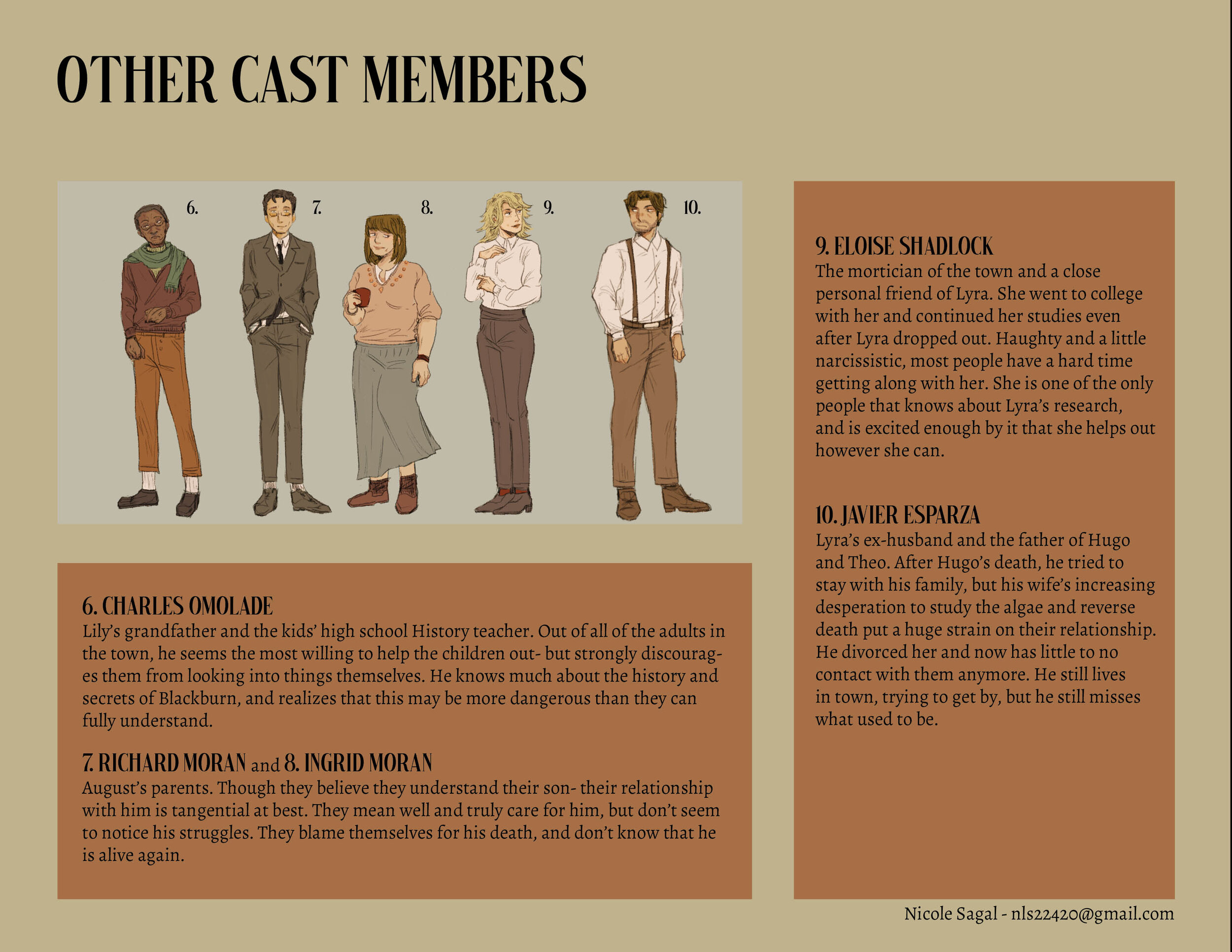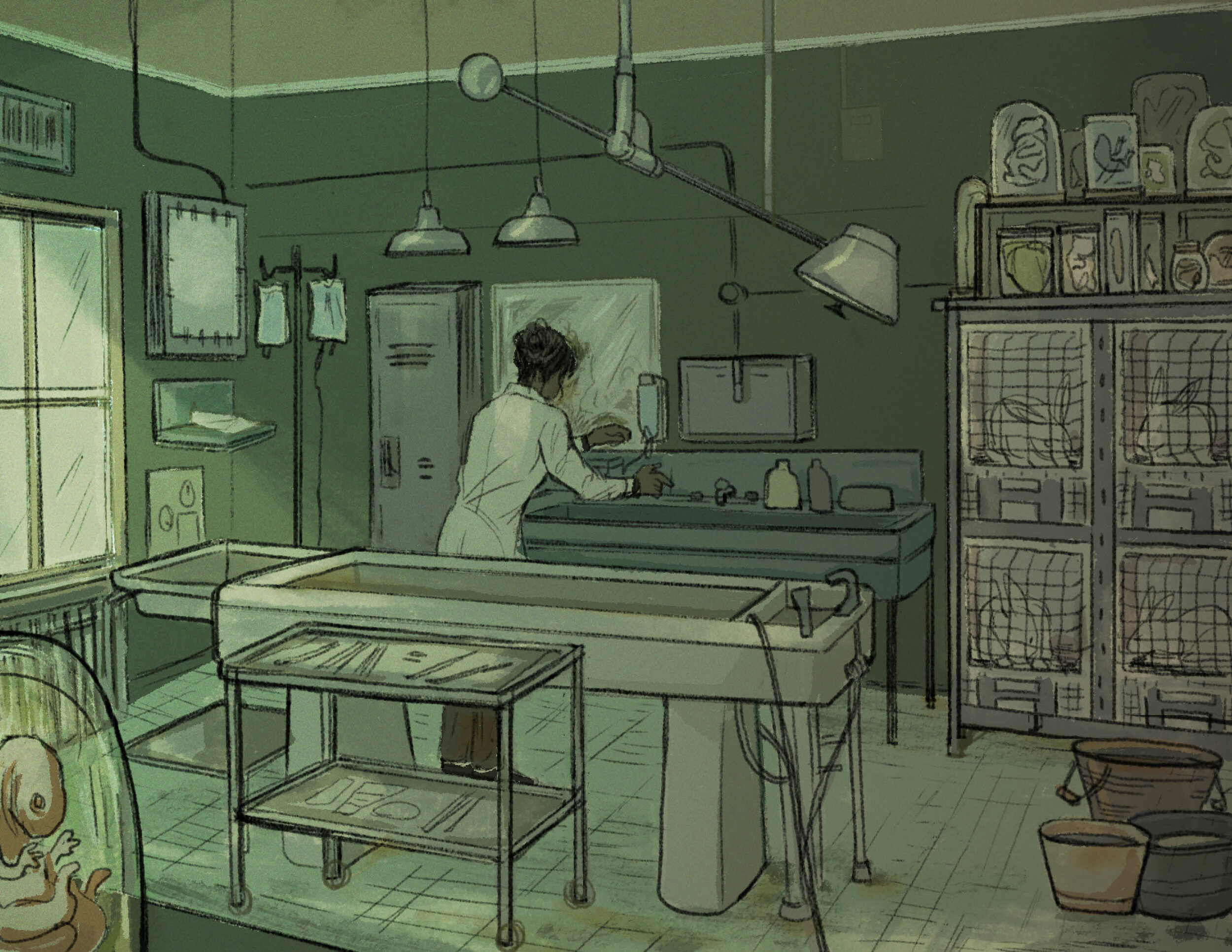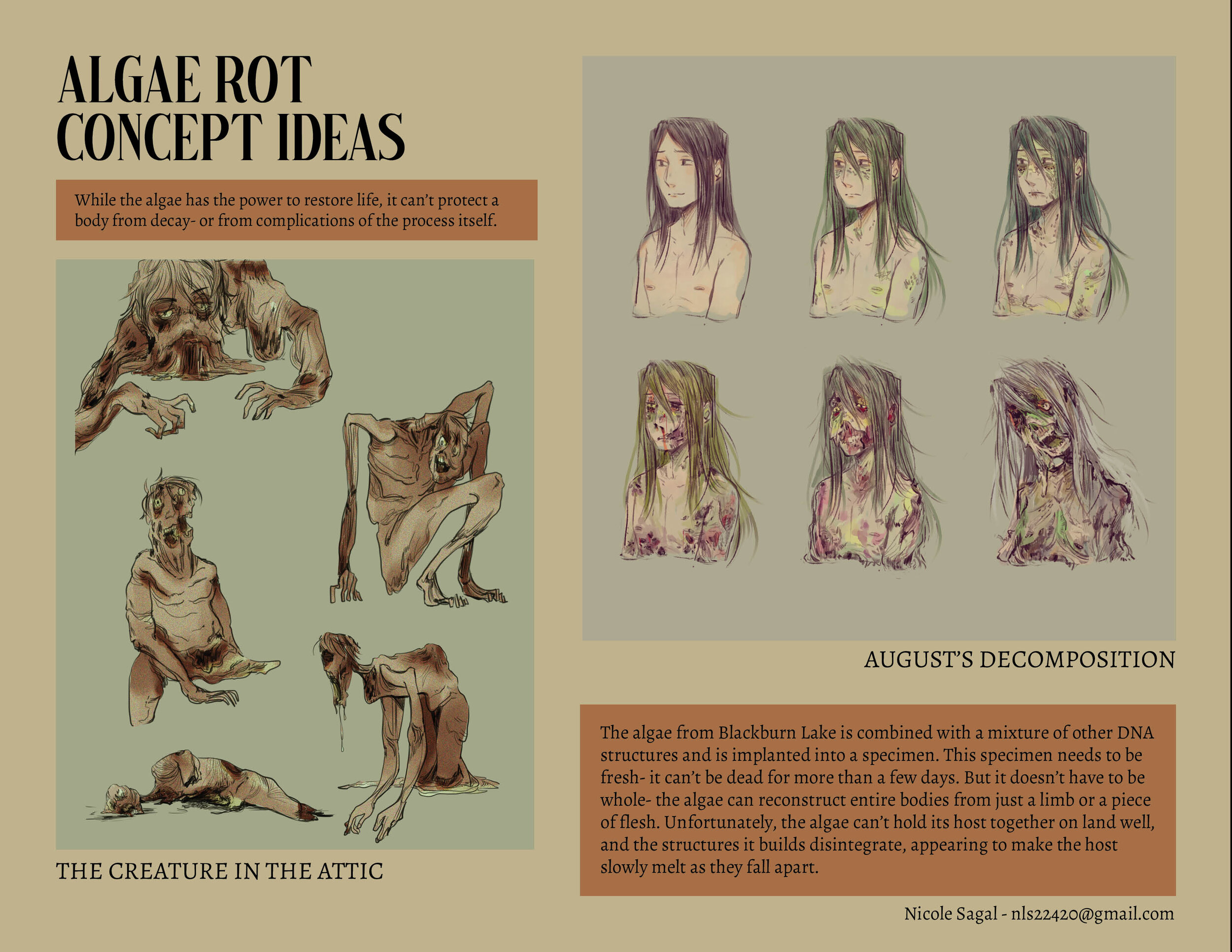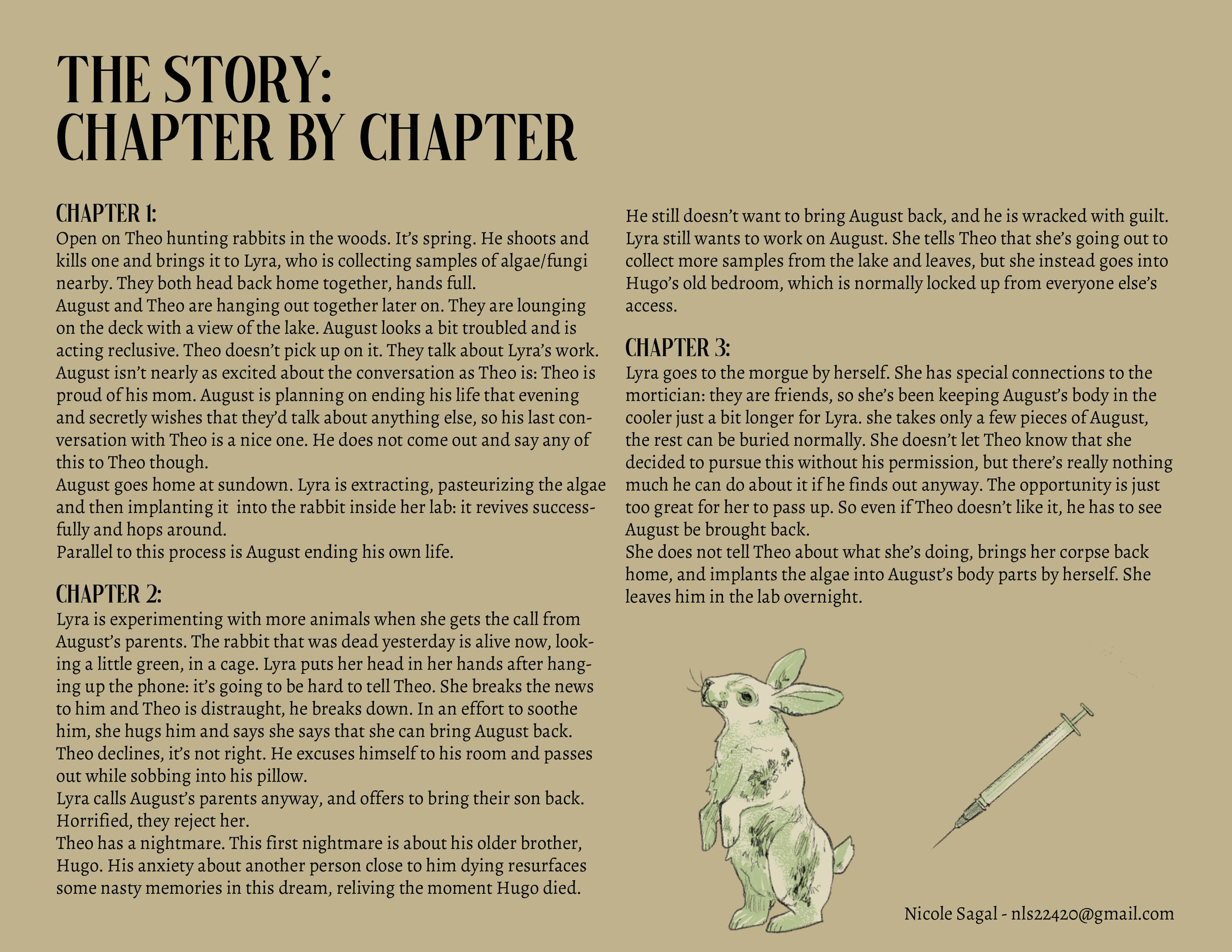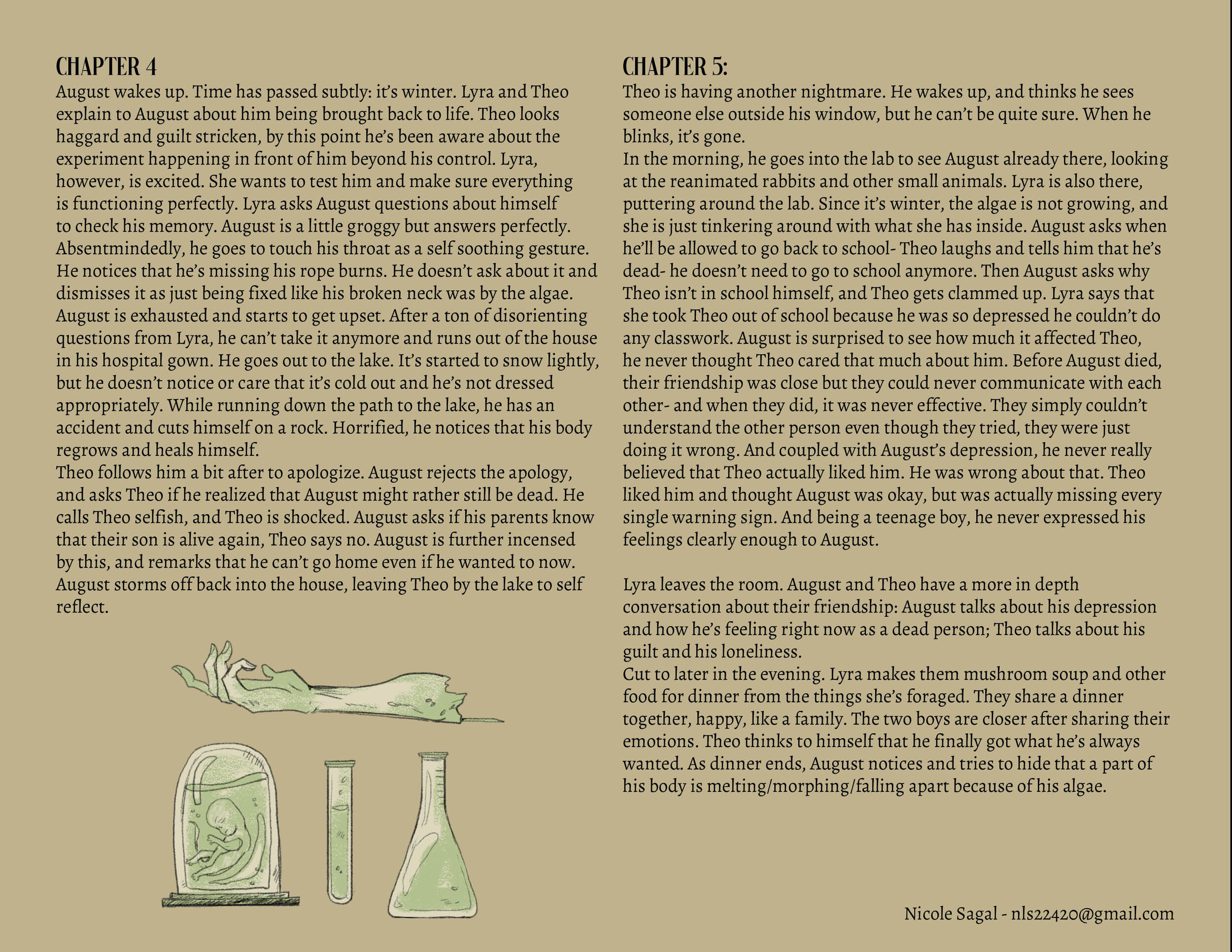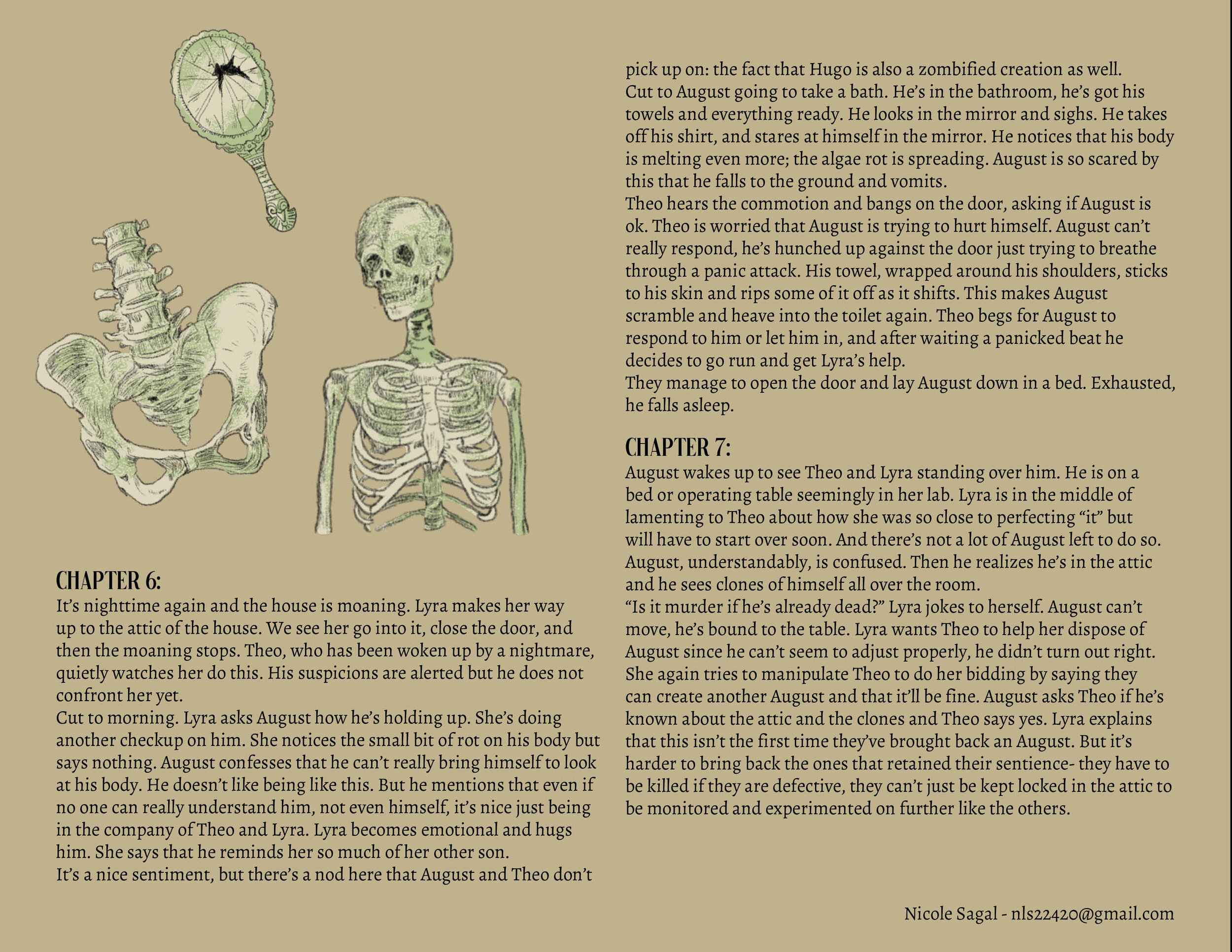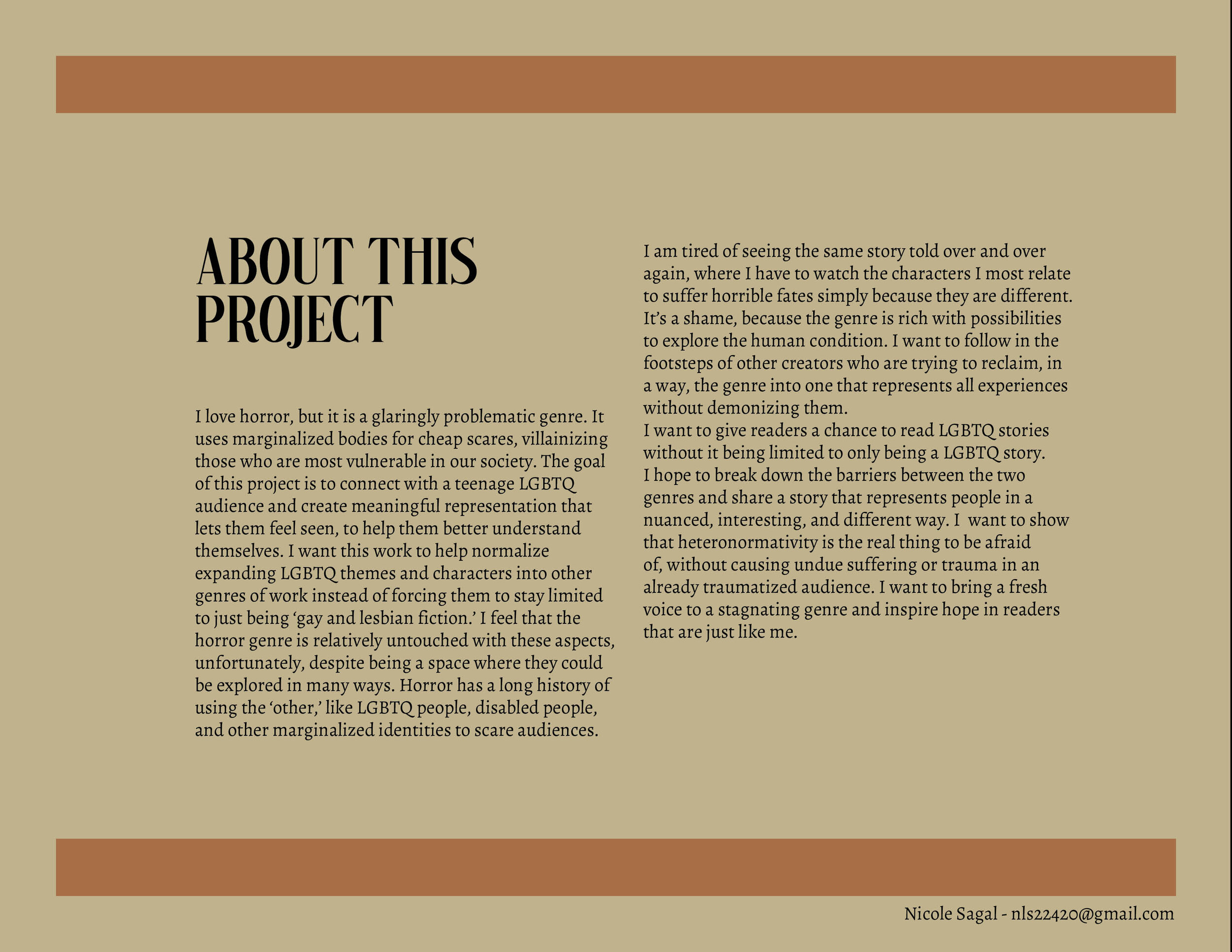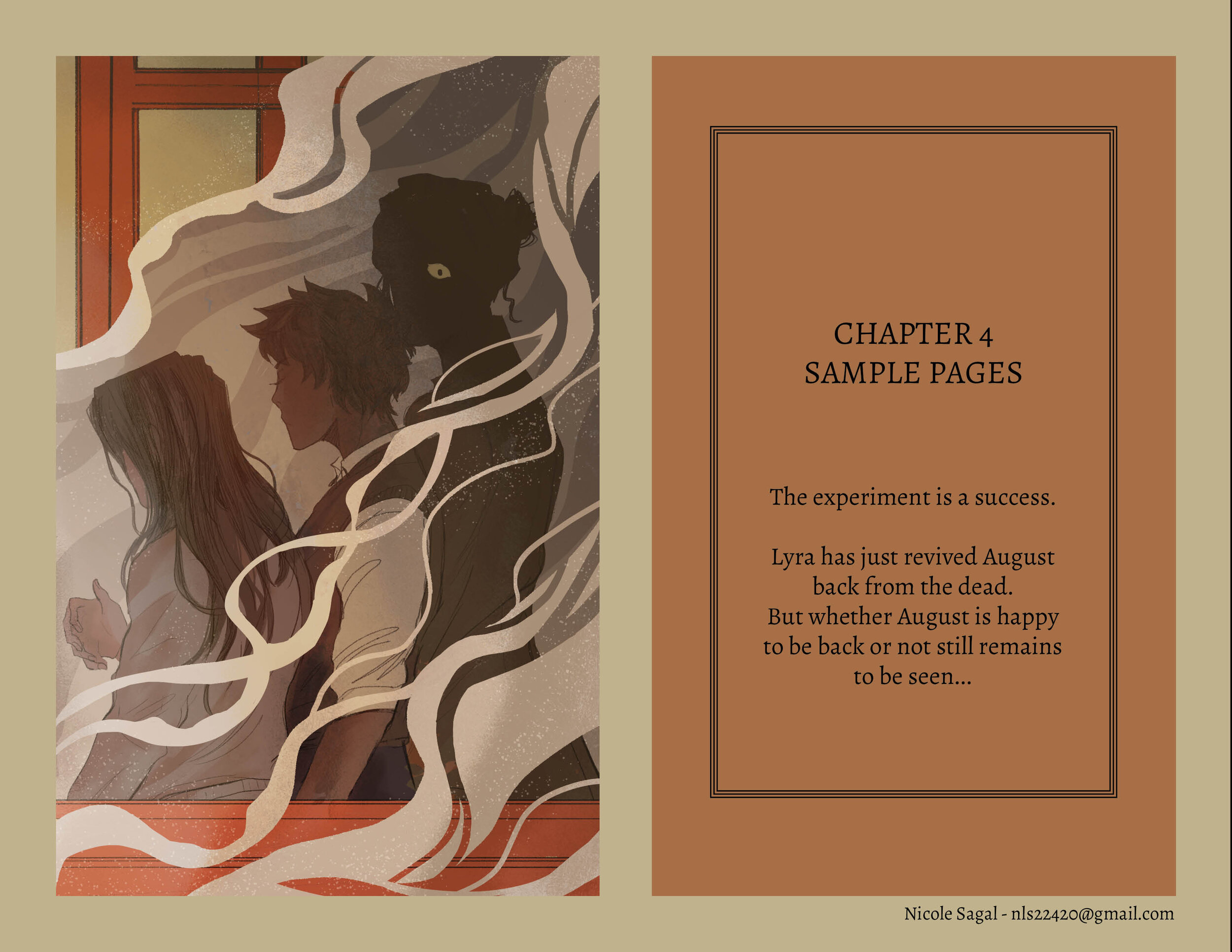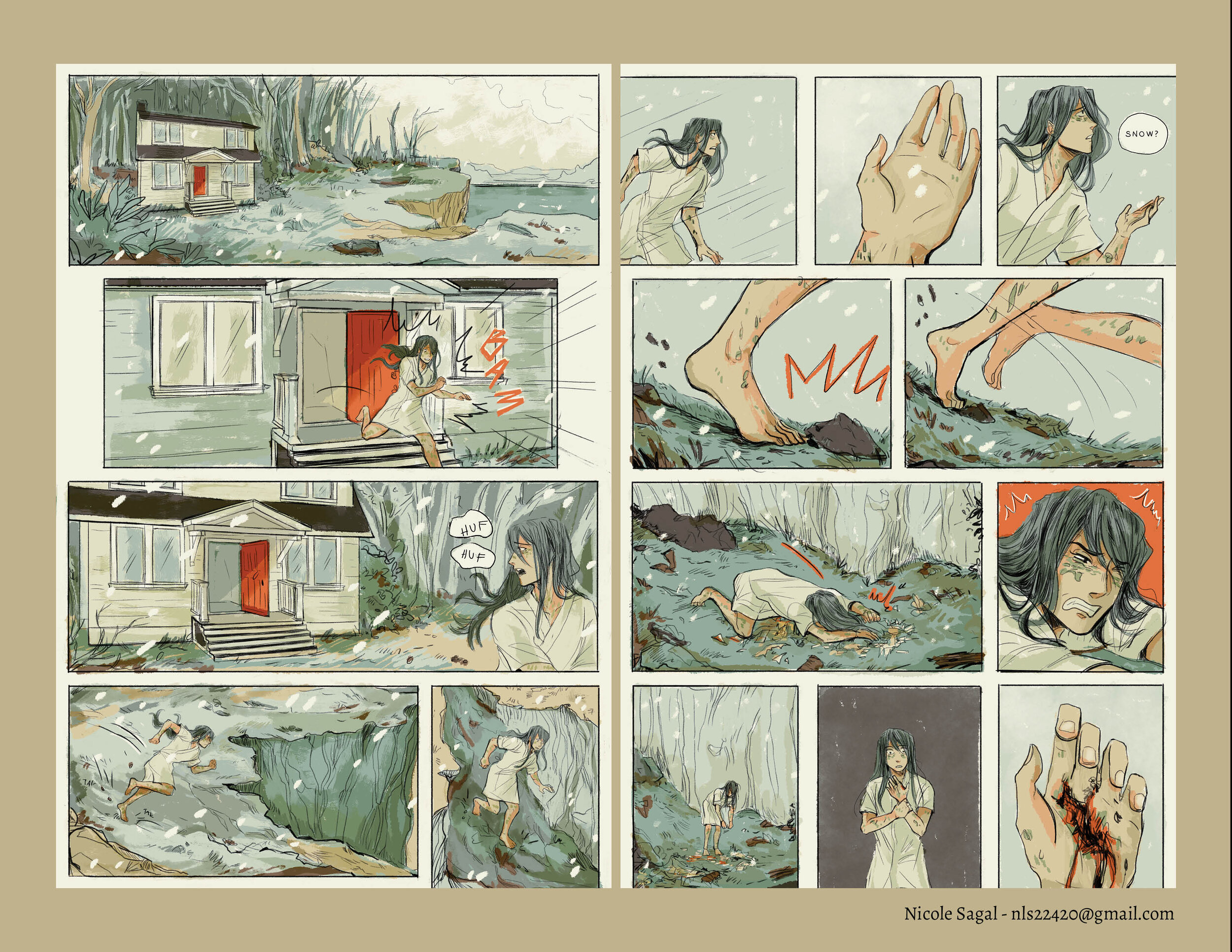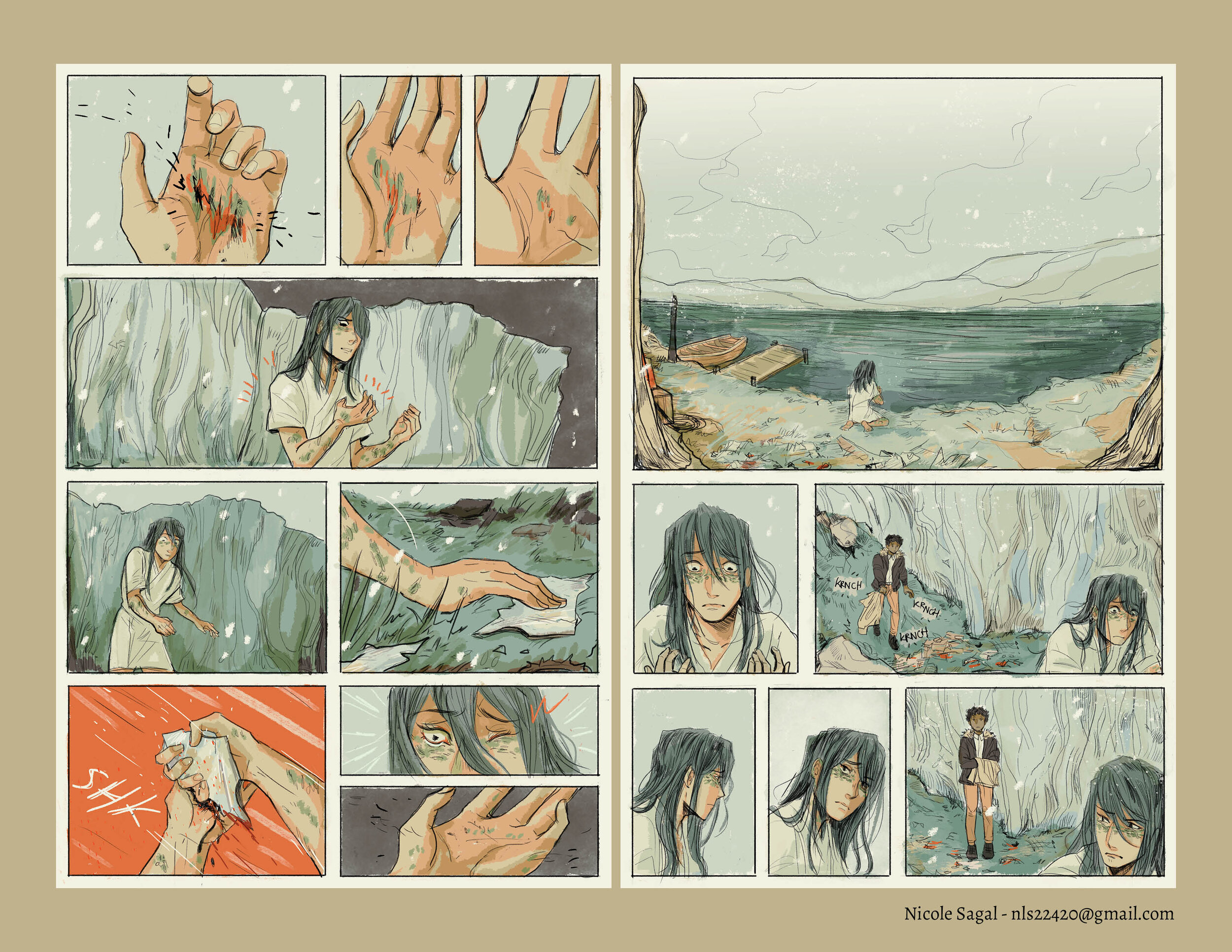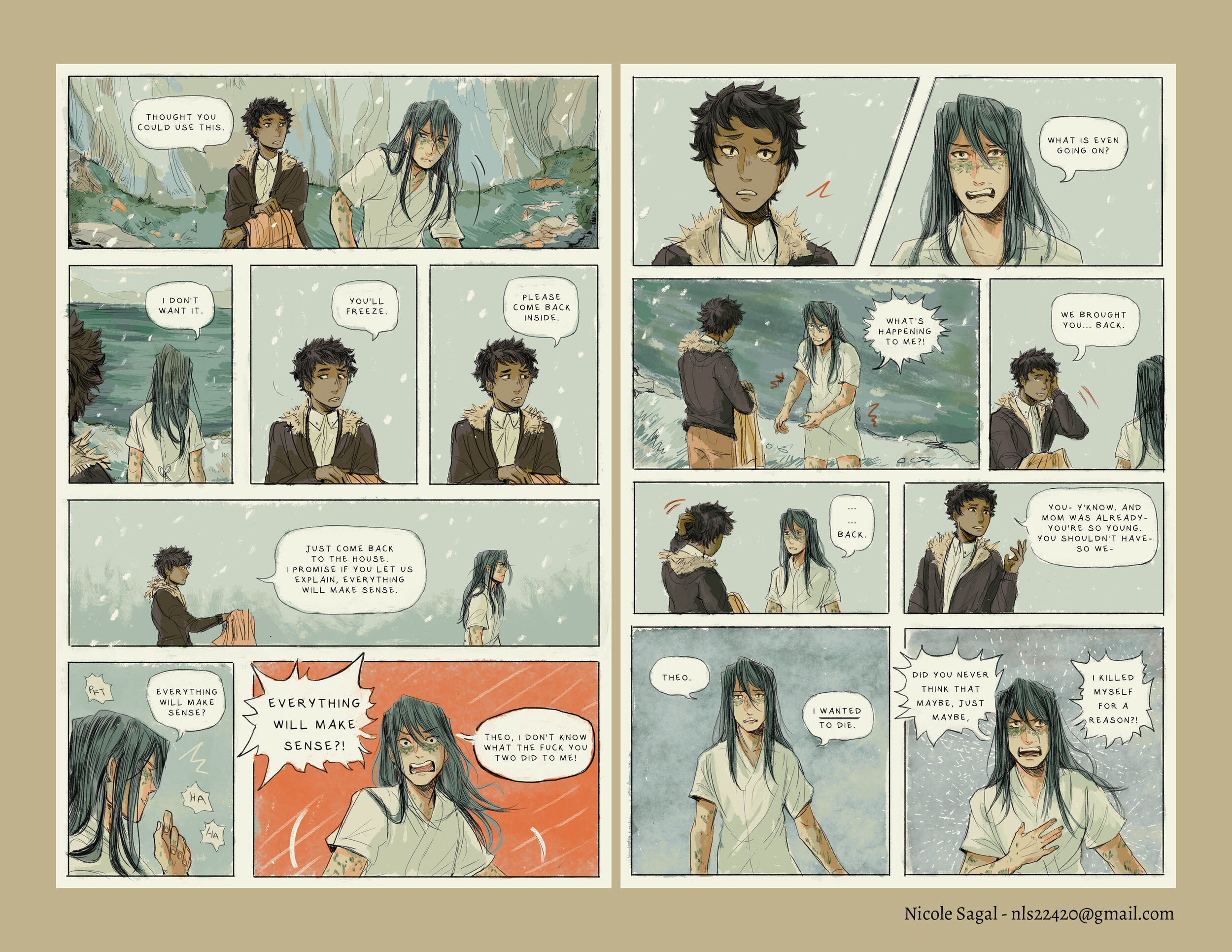
GROWING PAINS
My senior Illustration thesis project- a pitch for a full color, 200 page graphic novel centering on anatomy and identity, gender dysphoria and horror.
A little bit Frankenstein and little bit Stand By Me, “Growing Pains” is a coming of age tale that follows two teenage boys as they struggle with their identities as a mad scientist’s son and the boy that she reincarnated from the dead. August has recently died, but thanks to a strain of super regenerative algae being implanted into his body, he is reanimated and brought back to life. As a living corpse, August tries to cope with this new identity as his body begins to betray him. Theo is the son of the lead scientist, Lyra, who revived August. After a horrible accident befell his older brother, he’s lived a sheltered existence constantly under the watchful eye of his mother. But Lyra is keeping secrets from the both of them- secrets that threaten the already fragile peace they’ve tried so desperately to create together. Can anyone be trusted? What’s it like to live in a body that doesn’t fit you? And what’s that noise coming from the attic?
Horror at its best pushes boundaries, asks questions about human nature, tells stories of resilience, of overcoming trauma, and of love. But at its worst, it is a glaringly problematic genre. It constantly uses marginalized bodies for cheap scares, villainizing those who are most vulnerable in our society. LGBTQ characters have been coded into horror for as long as the genre has existed, but they usually can only exist as villains or to be punished and killed in the end for being LGBT. These tropes play on harmful stereotypes about gay and trans people being something to fear; people that are innately dangerous. However, LGBTQ people tend to flock to the horror genre regardless of these problematic depictions, because they connect to the monstrous and the othered. Better “bad” representation than none at all.
My graphic novel “Growing Pains” was created as a response to this problem. I wanted to flip the narrative and spark fear from the structures that villainize others, rather than those outsiders themselves. Additionally, as someone who has struggled with dysphoria, I wanted to express my own thoughts and feelings about gender identity through a genre that I’ve always been drawn to. In the end, I hope this graphic novel is accessible to not only LGBTQ audiences, but anyone who might be a fan of horror or has ever felt uncomfortable in their own skin.
